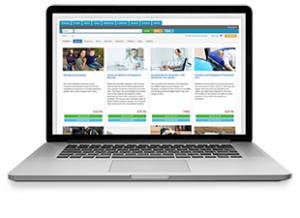
How to Keep Your Team Aligned on Safety Every Day
Why Strong Documentation Counts
In construction, utilities, and other high-risk industries, documentation is more than paperwork, it’s the framework that supports safe, consistent work. When inspections or incidents happen, your records reveal the story: what was planned, the actions taken, and who was accountable.
Yet, many crews still depend on binders, text threads, or scattered files. The outcome? Conflicting instructions, wasted time, and unsafe guesswork. Outdated documentation slows people down, while reliable documentation gives them direction and confidence.
Where Documentation Breaks Down
Even the best-written policies don’t help if they’re buried, confusing, or no longer current. Common breakdowns include:
- Different versions of the same procedure in use
- Old instructions still circulating
- Wasted hours searching for manuals, permits, or forms
- Improvised fixes when directions aren’t available
- Missed compliance with regulatory or company standards
These aren’t just small setbacks, they create real risks and extra costs.
Traits of Effective Documentation
For field teams, documentation has to be practical wherever work happens, not just in the office. Good documentation is:
- Clear: Straightforward language, logical order, and easy formatting
- Consistent: Standard naming and structure across all files
- Accessible: Reachable to the right people at the right time
- Centralized: One source of truth without version confusion
- Actionable: Lists clear steps, responsibilities, and escalation paths
Why It’s Time to Reevaluate
Work conditions have shifted. Crews rotate often, remote job sites are common, and most communication is now digital. If your documentation setup was built for one office or a single long-term crew, it may not fit how your team actually operates anymore.
This is especially urgent for:
- Safety policies that need frequent reviews
- Emergency procedures that must be instantly understood
- Standard operating procedures (SOPs) that guide daily work
- Training and compliance records that must be audit-ready
As job sites grow more complex, outdated or fragmented documentation becomes a liability. More companies are now moving toward structured, modern systems to keep information clear and accessible.
Steps Toward a Smarter System
You don’t need to rebuild everything at once. Start with your most critical documents, like emergency plans and daily checklists. Ask yourself:
- Is this accurate today?
- Can my team access it quickly?
- Does everyone know where to find it?
- Could it be organized in a simpler way?
Answering these questions often uncovers big chances to strengthen safety, reduce downtime, and make compliance easier.
The Takeaway
When documentation is clear and accessible, crews can work with more confidence and less risk. The more complex the project, the more important it becomes to simplify how teams find the right instructions at the right time.
Forward-thinking organizations are already shifting to digital, centralized approaches. Whether you’re converting old binders into digital files or improving existing systems, the goal is the same: safer teams with fewer obstacles standing in the way of getting the job done.
Stay tuned, we’ll be sharing examples and tools that show how leading companies are organizing their safety and emergency documentation.




































